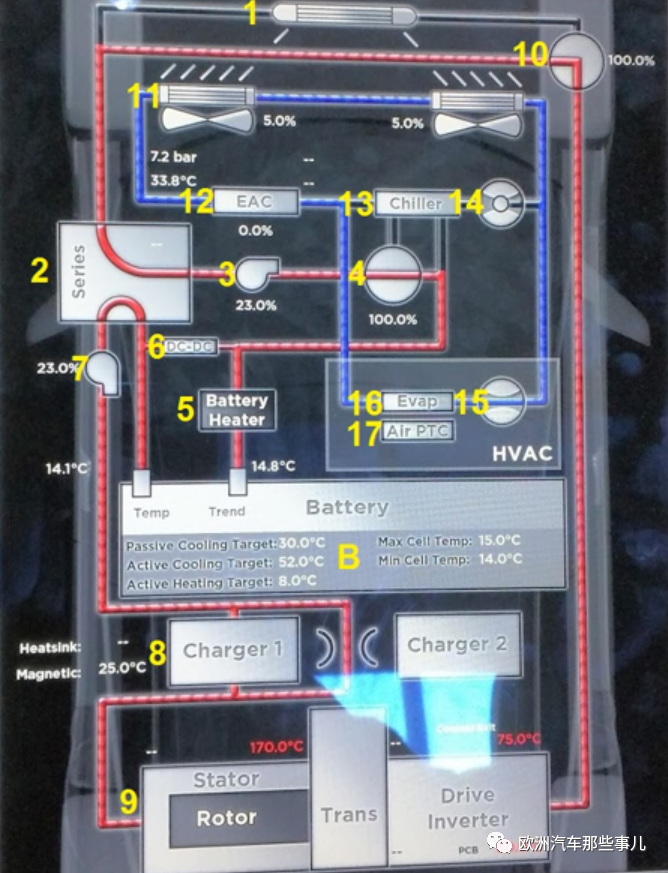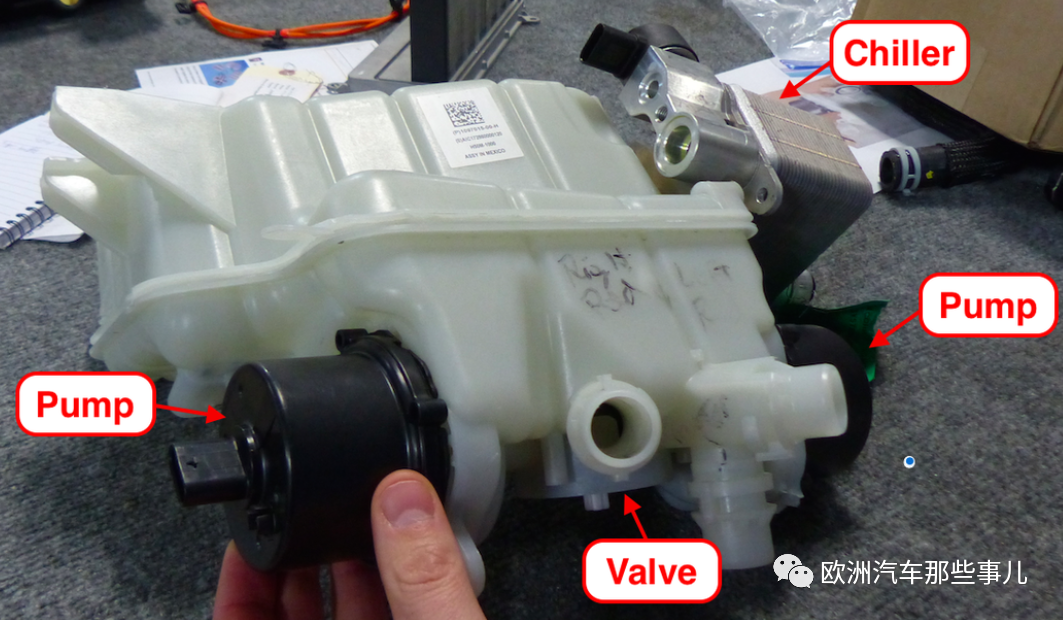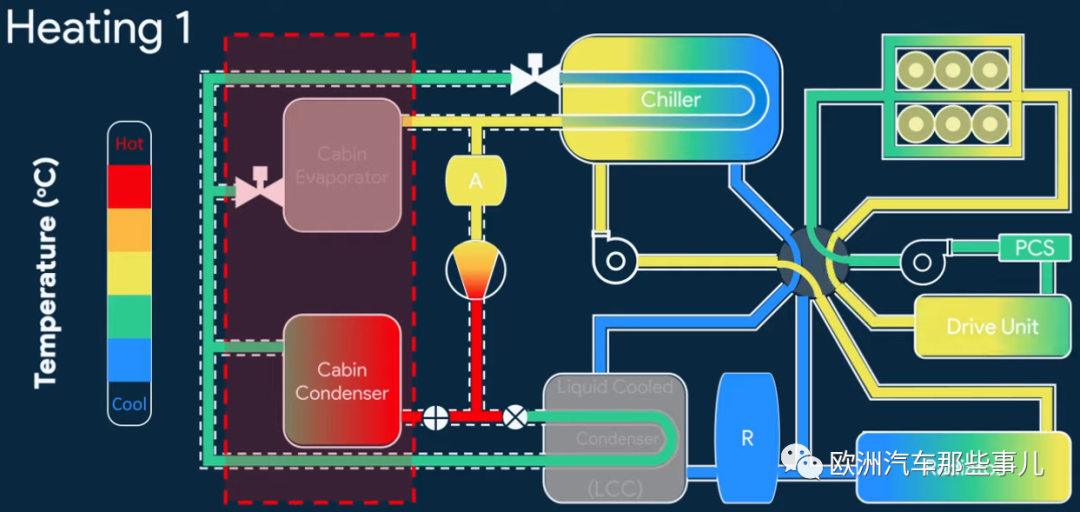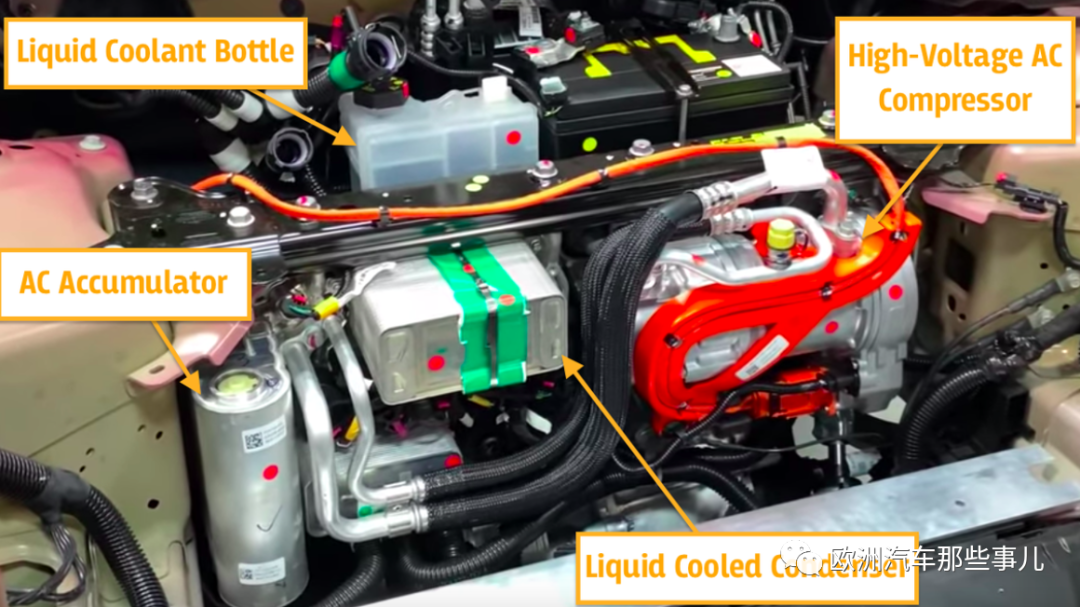The Model S is equipped with a relatively more standard and traditional thermal management system. Although there is a 4-way valve to change the cooling line in series and parallel to achieve electric drive bridge heating battery, or cooling. Several bypass valves are added to provide additional freedom. However, the front end of the car is still multiple heat sinks, which can be said to be adjusted on the standard thermal management framework.
The Model 3 came with a package called Superbottle when it launched in 2017. The system,the principle and overall structure of the overall system is similar to the previous generation of the Model S system, but this Superbottle integrates the pump, exchanger, 5-way valve, etc., in one body, simplifying the pipeline and connecting parts, reducing weight and space. It can be said that it is an integrated innovation on the framework of Model S. What is more interesting is that the motor has added new functions in hardware and software, which can actively adjust the idiq to reduce the efficiency of the motor and transfer heat to the battery.
After the launch of the Model Y last year, the topic of this thermal management system is also hot. The air conditioning refrigeration circuit eliminates the radiator at the front end of the car, and there is only one radiator in the front end of the water. Let's not talk about the principle with a diagram below, in short, through the 9-way valve (Octovalve, octopus valve) and several valves in the air conditioning circuit to achieve 10 different series and parallel and heating and cooling modes. At the same time, it also adds the function of transferring heat from the car to the battery pack through heat exchange with the water, using the battery pack as a heat storage device, and then transferring heat out to heat the cockpit when needed.
In addition to eliminating the front radiator of the air conditioning system, high voltage PTC is also eliminated. In the general low temperature environment heat pump heating, in the case of extremely low temperature, by the following methods. There is information on the Internet that although there is no high voltage PTC, the theoretical heating energy is also 7-8 kilowatts, which is comparable to high voltage PTC. However, it is estimated that the efficiency of the heat offset function and the effect of the motor heat reduction will certainly be lost, after all, the ability of heat conduction will not be good with a special heat exchanger, but it is estimated that it should be not a problem to reach at least 5 kilowatts.
The cockpit condenser and evaporation box in the air conditioning system work at the same time, heating and refrigeration offset at the same time, the compressor's energy consumption of several kilowatts is equivalent to bringing heat to the system, which is equivalent to treating the compressor as a high-pressure PTC, and the COP under this special condition may not be as good as PTC.
Use low-cost low-voltage PTC to compensate.
The blower fan motor provides a heating function similar to the previous generation Model 3 motor that actively reduces efficiency.
Going one step further than the previous generation of Superbottle, this time the entire air conditioning system, waterway refrigeration system, heat exchanger, octopus valve and more are integrated. The thermal management unit is mounted on a beam with a 12V battery, and Munro has mentioned that it is estimated that the thermal management system alone can save at least 15-20 kilograms of weight compared to many other models. Car uncle thinks this may be a bit overestimated, because it also adds small radiators and valves, etc., but at least 10 kilograms of weight loss is there, and there is considerable space savings.
Last year, three years after the launch of the Model 3, the system was also ported from the Model Y to the Model 3. Some netizens measured that at an ambient temperature of about 0 degrees, the upgraded high-speed battery life energy consumption was about 7% lower than the already efficient Model 3 old version. This result is also similar to the results of the comparison of other models with or without heat pumps, but the system weight and space are lower than other models with heat pumps. Of course, this is just a test, and there are many environmental factors.
So in just a few years, Tesla's thermal management system has been evolving from Model S to Model 3 to Model Y, and it has fed back to upgrade old models. But there is little talk online about the system's limitations. It believes that the efficiency of the system in a few specific conditions will be limited, because the air conditioning system must pass through the water and the outside world for heat exchange. After all, the subsystems in this system are very dependent on each other, and the degree of freedom in each different mode is limited. But overall, the system has more to gain than to lose.
In the next step of evolution,We can think of perhaps in addition to the further optimization of sizing and selection of each component, it can be considered to improve the efficiency of the air conditioning system under cold and hot offset conditions, and enhance the control to enhance the freedom and decoupling. For example, the heating efficiency of heating and cooling offset conditions is as close as possible to PTC through heat conduction efficiency. The other is enhanced valve control, providing greater flexibility to decouple the two systems. However, this is just a conjecture, and a lot of simulation and actual data analysis are needed to find the root cause of the shortboard and then optimize.
There are some measured videos on the Internet at about -30 degrees, the problem is not big, but the extreme test of a long standing time that is difficult to test may have an impact, but this condition also has the preheating function of the mobile phone APP to alleviate, and the software function to make up for the hardware to a certain extent. In addition, after a night of low temperature, there will be ice on the glass, and some areas also have traffic regulations that require visibility on the glass to drive the car on the road. Therefore, car companies will need to develop reasonable users to use the Duty cycle as the goal of engineering design, if the definition of Duty cycle is not accurate, it is lost at the start.
Post time: Oct-14-2023












